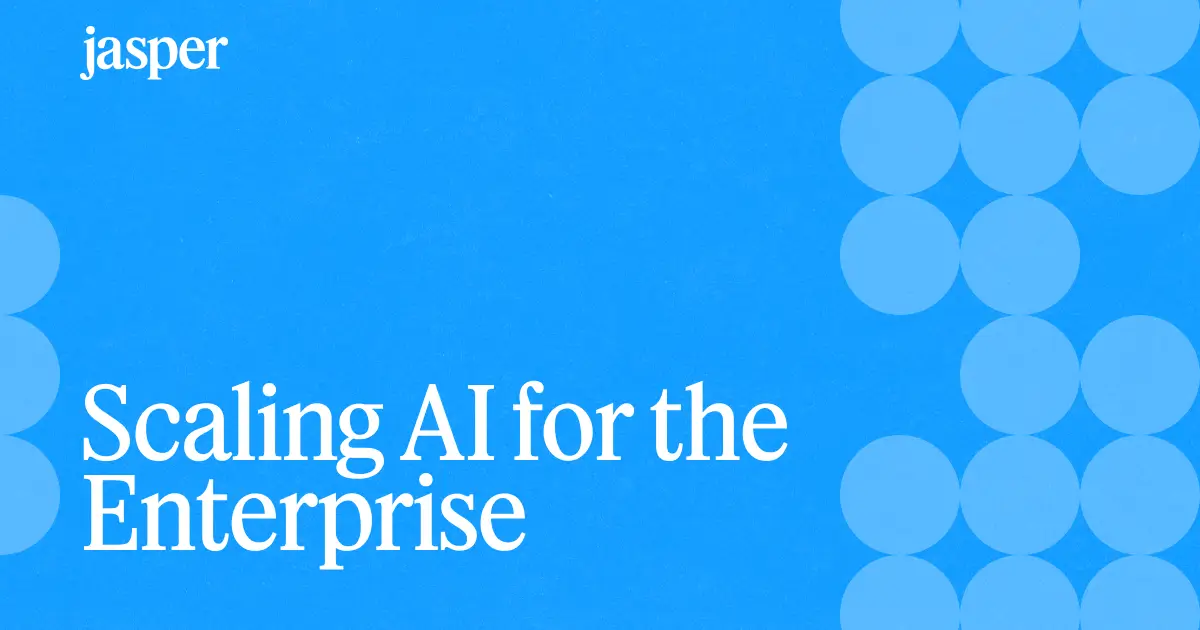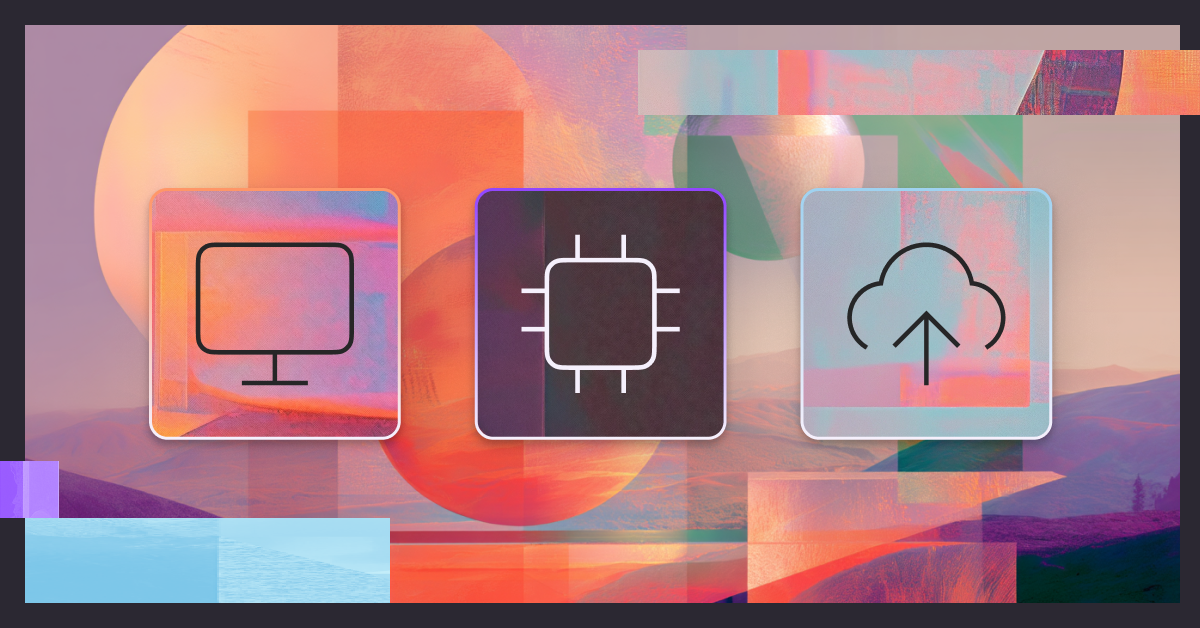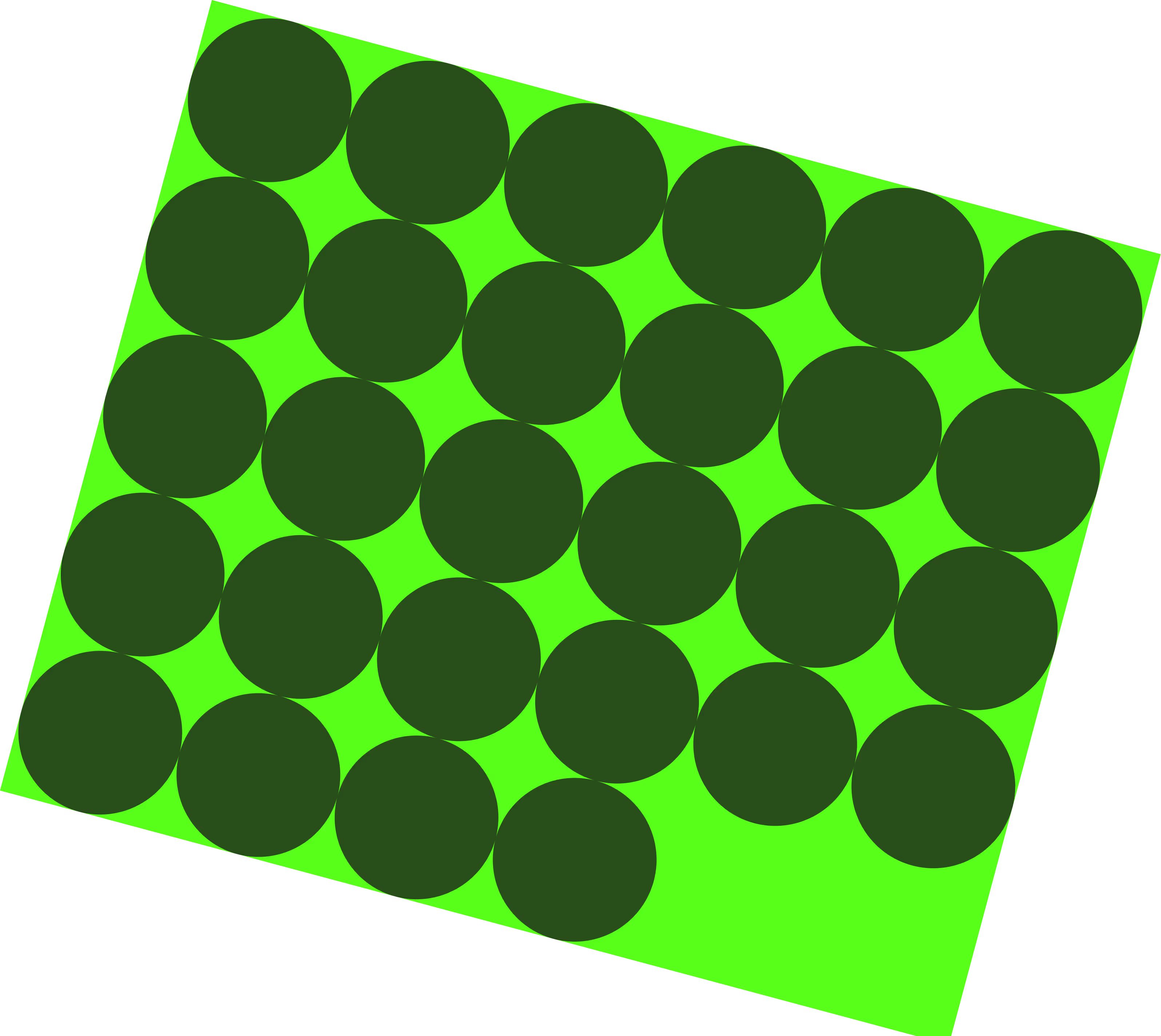Google AI Overviews Explained: The Impact on Search Traffic and How to Prepare Your Brand
Learn about Google's AI Overviews (SGE): What are they, how will they impact search traffic, and how can marketers measure their brand's performance?

What happens when you introduce generative AI into Google Search?
We’re about to find out.
For the past couple of years, Google has been teasing the Search Generative Experience (SGE), its most disruptive introduction of AI features into the search engine results pages (SERPs). At its annual product hype conference, Google I/O, CEO Sundar Pichai announced the imminent deployment of SGE rebranded: AI Overviews.
If you earn a significant amount of organic search traffic from Google, this is a huge deal. The inclusion of this new version of search raises so many questions for brands and content creators.
- Will this decimate my existing search traffic?
- Could there be new opportunities to get more eyeballs on my brand?
- How might my audience’s search behavior change altogether?
While there are currently more questions than answers, let’s break down what we know, speculate on what it means, and prepare for what we can do to make the most of the big changes ahead.
What Are AI Overviews (SGE)?
The AI Overviews are Google’s big gamble on introducing Generative AI in search results.
According to Google’s original guide, they will allow you to:
- Ask new kinds of questions that are more complex and more descriptive
- Get the gist of a topic faster, with links to relevant results to explore further
- Make progress easily, by asking conversational follow-ups or trying suggested next steps
This AI snapshot gathers relevant content from across the web to provide a summarized and sourced response to your search.
AI Overviews use a process called Retrieval Augmented Generation fueled by a variety of Google’s most powerful Large Language Models, including an advanced version of MUM, PaLM2, and a customized version of Gemini designed for Search.
Specifically, when someone conducts a search, Google searches its index and identifies the most relevant chunks (or fraggles) of content to your search, ‘ingests them,’ and produces a newly generated AI output.

The AI Overview generates a few standard content formats:
- Paragraphs (or sentences)
- Breakouts (expanded lists)
- Bulleted Lists
- Images
- Videos
The AI Snapshot also includes a selection of predicted follow-up questions that would continue your search journey. It appears above the normal search results that consist of links, ads, and search features,
AI Overviews represent a shift from traditional search results to a more dynamic, AI-driven search experience.
There are three types of searches that have different layouts and pull from different sources:
- Informational Searches
- Shopping Searches
- Local Searches
You can see a shopping search incorporates product listings directly into the result. It can appear as a variety of carousels and review content. When you click on a listing, you see additional product information that’s pulled from Google’s Shopping Graph (the Merchant Feed, Structured Data, Product Reviews, and more).

Local results are similar to the existing Map Pack on a local organic search but include more information that’s supported by the Google Knowledge Graph, local directory sites like Yelp, and local subreddits.

For every result, there’s a ‘Learn more’ link that goes to a support page with this informative video about how Generative AI works.
The AI Overview is rapidly evolving.
Over the past year, the Beta version has tested different layouts, configurations, and features:
- Citation favicons (gone)
- A carousel of sourced content (present for shopping and local searches, gone for informational searches)
- The label at the top of the AI Overview previously only stated that ‘Generative AI is experimental’
- Citations were originally hidden in a collapsed section, revealed by a bear claw icon (gone)
At the Google I/O event, a spattering of other AI Overview features were announced that have yet to appear publicly.
Take a moment to watch Google’s mini commercial for the AI Overview to see it in all of its dramatized action:
New AI Overview capabilities and features include:
- Tabs for simplified or a breakdown version of the output.
- An AI-Organized Search Page for dining, entertainment, or leisure-related searches.
- Multi-reasoning searches that would help you plan events, meal plans, trips or answer detailed complex questions with many variables.
- The ability to conduct an AI-supported search with a live video of yourself using your phone’s camera. It will allow you to ask questions about your physical surroundings in action.
Watch the entire Google I/O 2024 presentation or my quick 4-minute recap.
https://www.youtube.com/watch?v=GVBpurjLb-4
Whether these features are effective will be revealed over the coming months. It’s hard not to think more features will be added rapidly.
One of the massive remaining questions: What about ads inside the AI Overview? While ad carousels and listings appeared above and below the AI Snapshot, we have yet to see a version that includes a sponsored listing in the results. Google execs have mentioned the opportunities for advertisers in AI Overviews without providing anything concrete.
The AI Overviews Rollout Timeline:
Originally announced at Google I/O in May 2023, AI Overviews debuted as the Search Generative Experience (SGE) experiment within Google Labs (you can currently test out some cool GenAI video and music products).

Anyone could test the AI search results, provide feedback, and watch as Google tested different iterations.
In March 2024, Google began to launch live experiments of SGE to the public. How did non-marketers and SEOs react? Not great, Bob. CEO Sundar Pichai has claimed that people LOVE the AI Snapshot, but a few SEO forums found people asking how to turn it off.
Despite much speculation that Google cannot afford to mess with their ad revenue by launching SGE to the public, as mentioned the feature has been rebranded and deployed the week after the I/O event.
Initially, the AI Overviews anecdotally seems to be throttled. It’s absent from the many queries where it had been present over the past year. It’s fair to assume that it will appear more frequently as Google gets feedback on the output.
Impact on Search Behavior
If Google Search is a large source of traffic for your website (which it is for most brands in 2024), you need to consider the implications of AI Overviews.
When the AI Snapshot appears on your most precious keywords, it could feel like someone sitting in front of you at the movie theater wearing a large tacky hat.
There are a few schools of thought regarding how this might play out:
Scenario 1: AI Overviews are a Novelty
Initially, unsuspecting searchers might get a kick out of the AI output. While generative AI has gone mainstream over the past 18 months, many people have not directly interacted with AI tech.
They might find the novelty of the AI snapshot fascinating. They may show their friends. But after the initial magic wears off, people might develop AI Overvew blindness and scroll right past it.
AI Overview Impact: Significant at first with a quick off-ramp.
Scenario 2: AI Overview Quality Isn’t Good Enough
Will the generative output of the AI Overview satisfy searchers more than what they’d find visiting the first few search results? Currently, the AI snapshot isn’t an improvement.
The AI Overview is far from a polished product. It still suffers from two of the major existing limitations of Generative AI and RAG:
- Hallucinations (made-up facts)
Check out this factually inaccurate example that was included in their mini-commercial!
<blockquote class="twitter-tweet" data-conversation="none"><p lang="en" dir="ltr">The demo in the video showed the wrong answer to the camera conundrum. And it was highlighted. <br><br>Imagine trying to fix your camera and killing the film. <br><br>I'm not shocked AI suggested this. I am that the video editor didn't. <a href="https://t.co/qMSYRyaJcf">pic.twitter.com/qMSYRyaJcf</a></p>— Leigh :) Stark 🦄 (@Leighlo) <a href="https://twitter.com/Leighlo/status/1790691172526305567?ref_src=twsrc%5Etfw">May 15, 2024</a></blockquote> <script async src="https://platform.twitter.com/widgets.js" charset="utf-8"></script>
- Sourced from unreliable content (looking at you Reddit)
Here’s a fun result generated that included an anonymous Redditor’s ‘authoritative’ position on the best movie in the world:
<blockquote class="twitter-tweet"><p lang="en" dir="ltr">Even SGE is over-indexing on Reddit. 😂<br><br>"According to a Reddit user, it has an average ranking of 5.5, which is "solidly in its own tier".<br><br>Yup...seems worthy of the query 'best movies all time.' <a href="https://t.co/HPOyTo5DAy">pic.twitter.com/HPOyTo5DAy</a></p>— Garrett Sussman ☕️🔎 (@garrettsussman) <a href="https://twitter.com/garrettsussman/status/1752010151958052867?ref_src=twsrc%5Etfw">January 29, 2024</a></blockquote> <script async src="https://platform.twitter.com/widgets.js" charset="utf-8"></script>
If people are consistently disappointed by the results, they’re going to quickly lose trust in the output and skip it for trusted and more reliable sources.
Scenario 3: AI Overviews Consistently Improve and People Love It
Google has been rapidly testing and updating AI Overviews. You can see the potential, especially for certain types of searches that are more personalized and specific.
Let’s pretend that Google taps into a version of AI Overviews that rejuvenates Search. People love it. They prefer it to traditional search results. They’d rather get direct answers and topic summaries than pogo stick between websites.
That’s going to fundamentally crush our search traffic, right?
If search behavior changes and informational searches become commodified, we’d expect fewer clicks to our sites.
In SEO, we always joke that ‘it depends,’ but you need to think about the different types of brands and content creators that might be impacted differently. It depends on:
- The complexity, maturity, and specialization of your topics. Simple content that anyone can create won’t attract searchers to your site. Expertise-driven unique content will thrive.
- The medium of your content matters. Video, audio, and imagery might be more distinctly yours and specifically appropriate for your targeted searches.
- Businesses with products or strong brands will continue to drive organic search traffic either due to searchers specifically choosing their content over competitors or explicitly searching for their content with branded terms.
There will be opportunities to win MORE in search, but the table stakes for quality will be higher and the strategies will change.
The Potential Traffic Impact of AI Overviews
For the past year, software companies and the SEO industry have been conducting studies to predict the impact of AI Overviews (SGE) on click-through rates. Everyone agrees that search traffic will decline, but there are different levels of concern.
Most of these studies used results from the SGE experiment, so while we can’t rely on these results being definitively conclusive, we can make some predictions based on the leading directions that the data reveals and identify some correlations.
The reports below investigate when the AI snapshot is triggered, segmented by types of searches, industries, and load speed. They also look to categorize where in the rankings the sources come from.
- We Analyzed 100K Keywords to See Google’s AI in Action - Yevheniia Khromova - SE Ranking
- The Impact of Google Search Generative Experience on Brand and Product Terms - Laurence O'Toole - Authoritas
- 11 Google SGE Disruptions Found After Analyzing 500k Queries - Tomasz Rudzki - Ziptie
The biggest statistical takeaways:
- SGE appears on 82% of queries on average, with finance industry queries being the only outlier at 47% and beauty industry searches showing up for 99% of searches. (ZipTie)
- 85.5% of SGE snapshots link to one or more domains from the top 10 organic results, but also include many sources from outside the top 100 search results (SE Ranking)
- The No.1 Organic drop varies from a high of 1,723 pixels in Office Supplies and 1,718 in Fashion & Apparel to a low of 572 in Insurance - our Wave 1 eCommerce research showed a drop of ~1,500 pixels and both studies reflect a huge change in the SERP for product related queries (Authoritas)
Prior to the public rollout, Google was testing the AI Snapshot on most queries. Many sources were outside the top 10 rankings, and the size of the snapshot is disruptive to results.
SEO Agency iPullRank founder Mike King created a free reporting tool to assess your potential traffic loss called the SGE Threat Report.
It uses Semrush or Google Search Console Data, your industry’s click-through rate benchmarks depending on rankings, and the appearance of the AI Overview for your top 250 queries to calculate potential traffic loss. It’s been the best assessment tool designed so far.
We conducted the experiment on Jasper’s non-branded keywords to see what might happen:

You can see that with a focus on informational content, some of Jasper’s highest-performing non-branded keywords are at risk. Now, we don’t know if that traffic is driving revenue or purely brand awareness from the outside looking in, but we have a starting point to analyze, investigate, and take proactive action.
How Brands Can Optimize for Informational AI Overviews
Optimizing for AI Overviews is like walking on Jello. Minimal surface tension. Gelatinous.
Since the underlying tech seems to be overreliant on pure relevance for informational keywords, the typical levers you can pull to give yourself a better chance of appearing in the AI Snapshot don’t work here.
This isn’t about backlinks, authority, or user experience. The results are also volatile. For important terms, you’ll want to monitor the results weekly (sometimes even daily).
The good news is that if you’re not an authoritative brand or category leader, you can sneak into the snapshot.
The best approach for AI Overview optimization is to reverse engineer the AI Snapshot for your target informational keyword, by focusing on two strategies:
- Content Format
- Relevance
You need to put on your scientist hat and conduct some experiments.
Let’s say we wanted to appear for the keyword “How to spot AI content.”
The Jasper Blog has an article that covers this topic well:
How to Edit AI Content: 9 Tips for Adding a Human Touch to AI Outputs
Step 1: Pick your keyword and analyze the content format.

In the content AI Overview, we see the following formats:
- A paragraph about how AI content detectors work.
- A ‘breakout’ list of AI detector tools
- A Videos-focused bulleted list of indicators
Note: While title tags and meta descriptions don’t play a role in the AI Overviews, you can use Jasper AI tools to improve your click-through rate when the AI Overview doesn’t satisfy search intent.
Step 2: Analyze the relevance Similarity Score of the sources.
Now we can click on the carets below each section to pull out the sources, in this case, it’s an FAQ section from Austin Ulrich’s website.


Using MarketBrew’s free SGE Visualizer tool, we can generate a mathematical measure of relevance between the FAQ and the targeted keyword: “How to spot AI content”
We put in the link from the cited website and the target keyword:

Then we can scroll through the content to find the exact text that’s being used in the AI Overview along with the similarity score for that cluster.

Step 3: Update the specific content chunk in your own article to answer the question and test to earn a similarity score that’s higher than the current winning content.
Since the AI Overviews are so volatile, you can also experiment with other content chunks and relevance similarity scores. Try different formats, just make sure that your score is high (aim for a benchmark score above 70%).
For more examples and a walkthrough, watch my webinar replay on AI Overview Optimization and check out the iPullRank guide to optimizing for AI Overviews:
Four Additional AI Overview Optimization Tactics:
In November 2023, academics conducted an experiment that investigated what other types of content are preferred by LLM outputs in search results. They termed the framework Generative Engine Optimization (GEO).
They determined that authoritative tone, statistics, cited sources, and quotations from experts (even if they’re fabricated) appeared more frequently in the snapshots.

Use these trust elements in concert with these Jasper SEO use cases to future-proof your content.
eCommerce and Local Search Optimization
Commerical shopping or geographical searches are sourced by different content and would benefit from traditional SEO tactics.
Shopping searches leverage Google’s Shopping Graph and your standard product review content. Consistently update your product specs in Google’s Merchant Feed, earn reviews, and market your way into various review listicles.
With local searches, the results still depend primarily on proximity, relevance of business, and reviews. But you also see specific local businesses sourced by directory sites like Yelp and TripAdvisor. Geographic subreddits sometimes show up as well. You need to develop visibility on those sites and optimize your Google Business Profile.
Measuring Performance in SGE
Marketers are obsessed with attribution right now. Despite the complexity of how people make purchases, to prove our value, we are being asked to track and measure everything.
In an ideal world, we’d be able to track impressions and clicks from each element in an AI Snapshot. We’d want to report on the searches and follow-ups, shopping conversions, and even Google Business Profile visits via local searches.
But right now, there’s no indication that we would get SGE data in Google Search Console.
As mentioned previously, you can track the impact of SGE on general keyword performance and visibility in the AI Snapshot.
- iPullRank’s SGE Threat Report offers a free one-off report on 250 keywords that can predict how much traffic you’d expect to lose due to the presence of an AI Snapshot and whether your site appears.
- Advanced Web Ranking and SE Ranking offer SGE tracking on one of their paid plans.
One other consideration for tracking SGE performance going forward. If SGE is successful and people embrace it, search behavior will change (along with the way we measure it).
You’d expect people to use more natural language in their searches. That means more varied and longer searches. We would need to track our Organic Search performance by topics, not individual keywords. It’s an important consideration for SEO strategy going forward.
Where Does AI in Search Go From Here?
AI Overviews are officially here. They represent a departure from traditional search. They’re more than featured snippets on steroids. Will they be perceived as an improvement in Google’s search results? That’s to be determined. Initially, there is a lot of skepticism from the SEO community. However, we know that AI has an important place in SEO.
But assuming that Google continues to invest heavily in the tech, improve the results, and develop a well-received user experience, we could see some major changes to how people search.
For anyone who questions the importance and impact of generative AI, remember that people used to be anti-writing, anti-book, anti-typewriter, and anti-computer. If you’re a Jasper customer, you’re unlikely to be on the wrong side of history.
Want more compelling evidence on the direction of Search and AI? Watch our webinar replay on the Paradigm Shift of SEO: How Marketers Can Prepare
More of the latest & greatest

Scaling AI for the Enterprise: How Marketing Leaders Drive Impact
High-performing marketing teams are scaling AI with structure and strategy. Learn how CMOs can lead the way to drive organization-wide impact.
July 1, 2025
|
Megan Dubin

Reflections from Cannes: Why Brand and People Still Matter Most in the Era of AI
At Cannes Lions 2025, one truth stood out: brand, trust, and authenticity are making a powerful comeback.
June 24, 2025
|
Loreal Lynch

Interactive Tool: Benchmark Your AI in Marketing Strategy
Discover your marketing team's AI maturity. Benchmark your strategy, compare with peers, and uncover gaps with an interactive tool.
June 17, 2025
|
Megan Dubin







